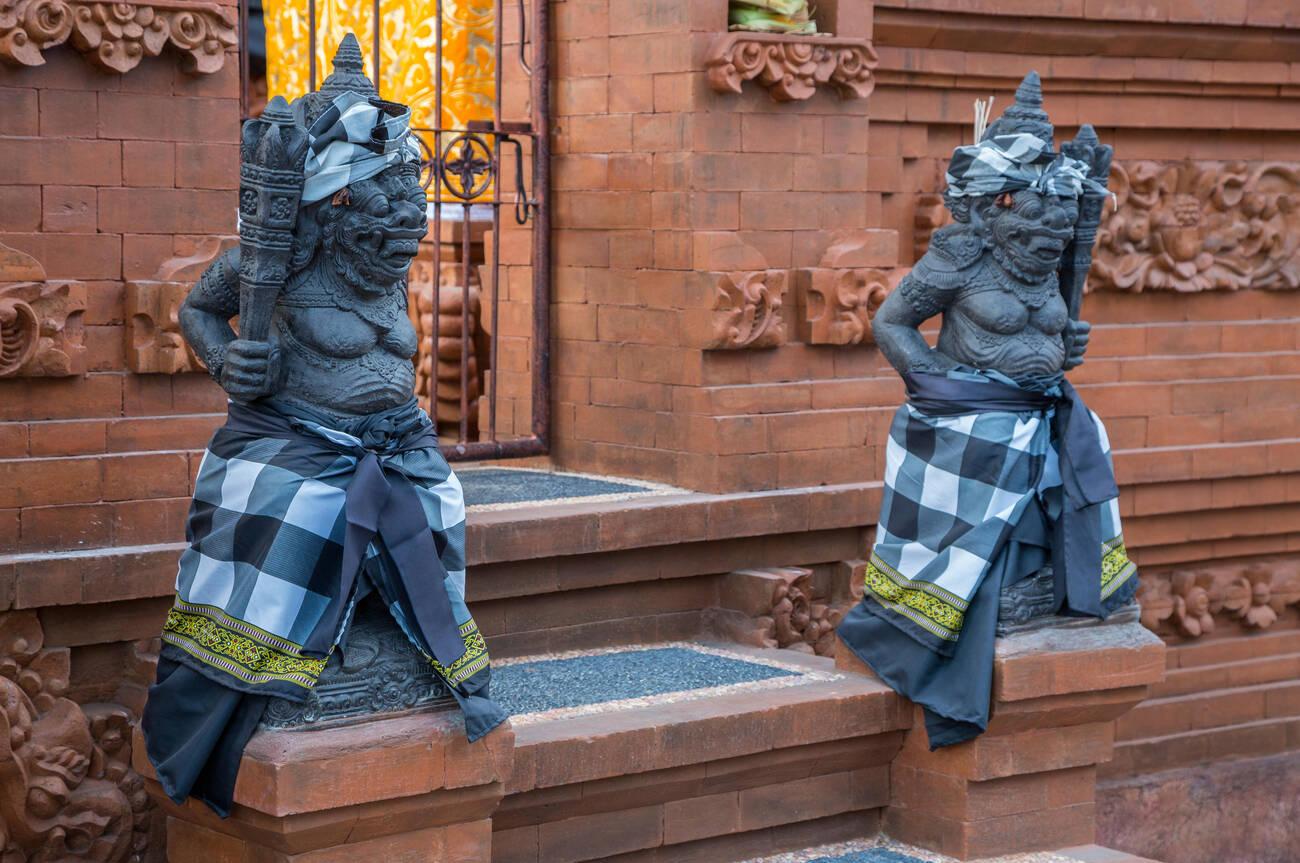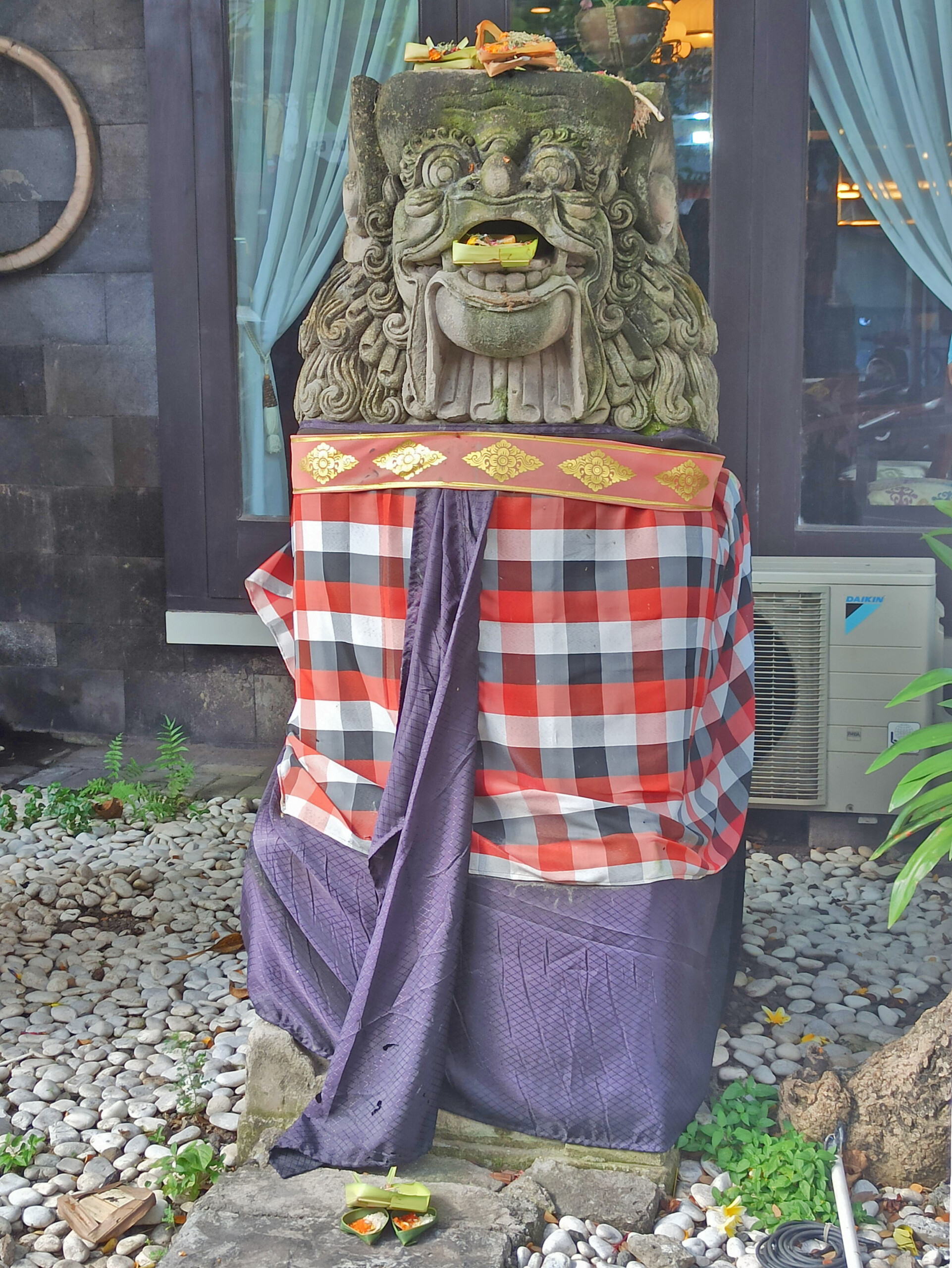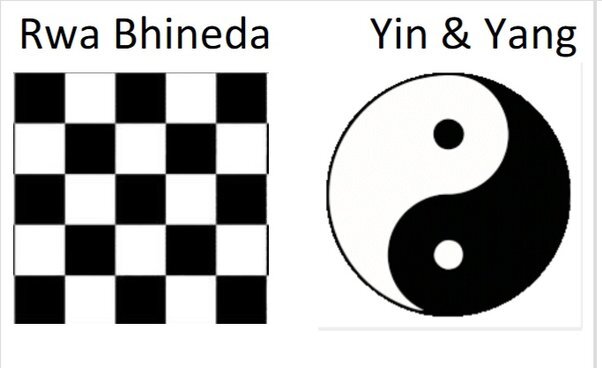Bali's diverse culture, art, and tradition are a treasure trove of fascinating knowledge. One of the most iconic and intriguing underrated indigenous elements is 'Saput Poleng', a striking black-and-white checkered cloth that you'll encounter at almost every corner of this mystical island. But what does this patterned fabric represent, and why is it so deeply ingrained in Balinese life? Let's dive into the fascinating world of Saput Poleng and unveil the layers of meaning and significance that lie within.
Harmony in Balance: The Profound Significance of 'Saput Poleng'
Origins of Saput Poleng

Saput Poleng holds a significant place in the daily lives of Balinese Hindus. The term "poleng" in the Balinese language signifies a checkered pattern resembling a chessboard, which symbolizes balance and order. The black and white colors of this fabric are believed to represent the eternal dichotomy of the universe, where opposing forces coexist in harmony.
Varieties of Saput Poleng
Saput Poleng comes in three distinct varieties, each with its own symbolism:
Saput Poleng Rwa Bhineda: This variety features the classic black and white pattern. The contrasting colors represent the interplay between dharma (goodness) and adharma (evil), reminding us of the inherent duality of life.
Saput Poleng Sudhamala: In addition to black and white, Sudhamala includes a shade of gray, symbolizing the transition between black and white. It represents the concept of harmonizing the dualities and achieving balance.

Saput Poleng Tridatu: This version adds a touch of red to the black and white pattern. Red signifies energy (rajas), black represents inertia (tamas), and white symbolizes purity and wisdom (satwam). Together, they underscore the need for harnessing energy while avoiding misuse.
The Profound Symbolism
Saput Poleng is not merely a piece of cloth; it carries deep philosophical meanings. The black and white checkered pattern reflects the philosophy of "Rwa Bhineda," emphasizing the coexistence of opposites in the world. It's a reminder that life is a blend of light and dark, good and bad, and we must maintain a delicate equilibrium.

This is similar to ancient China’s ‘Yin Yang’ philosophy. In essence, both concepts, Rwa Bhineda and the Yin Yang, share a fundamental idea that describes the perpetual interplay of balancing forces in the world. They illustrate the interdependent, opposing, and complementary nature of various aspects of life and the natural world. It's as simple as the interplay of good and bad, light and dark, day and night, hot and cold, sadness and joy, positive and negative, black and white, as symbolized in their respective logos, and more. But there are several variants of Saput Poleng which add another color to the philosophy.
Saput Poleng Sudhamala introducing shades of gray. It encourages us to navigate the complexities of life and find a balance between opposing forces.
Saput Poleng Tridatu takes the concept further by adding the color red, symbolizing energy. It emphasizes the importance of channeling this energy wisely and not using it to fuel conflicts or divisions.
These philosophies resonate deeply with Balinese Hinduism and serve as a reminder of the need for harmony in our lives.
Saput Poleng in Daily Life
Saput Poleng has a multifaceted role in Balinese society. You can find it adorning various objects and places, including:
Sacred Temples: Saput Poleng is often used to decorate temples and shrines. Its presence signifies the sanctity of these spaces and serves as a protective symbol against negative energies.
Guardian Statues: Dwarapala statues, the fierce protectors of temple gates, are adorned with Saput Poleng. This emphasizes the role of these guardians in maintaining harmony and protecting sacred spaces.

Peculiar Trees: Many trees in Bali are lovingly wrapped in Saput Poleng. This tradition acknowledges the life force and energy residing in these trees and discourages their needless removal.
Traditional Healers: Balians, the traditional healers of Bali, often wear Saput Poleng. This symbolizes their role in maintaining spiritual balance and healing the community.
Wayang Kulit Performers: Puppeteers who perform the traditional shadow puppet play, Wayang Kulit, wear Saput Poleng during purification ceremonies. It highlights their sacred duty as storytellers and guides.
A Reflection of Harmony in Diversity
The profound philosophies embedded in Saput Poleng reflect the rich cultural tapestry of Bali. The island's commitment to unity, balance, and respect for all forms of life is encapsulated in the use of this symbolic cloth. Just as the checkered pattern represents the coexistence of opposites, Bali embraces diversity and celebrates the harmony it brings.

Saput Poleng reminds us that life is all about balance, and by adhering to the principles of unity and tolerance, we can create a harmonious world where every individual, regardless of their background or beliefs, can coexist peacefully. So, the next time you encounter the iconic black-and-white pattern of Saput Poleng in Bali, take a moment to appreciate the profound philosophy and cultural richness it represents. It's not just a cloth; it's a symbol of balance, harmony, and the unity of all things in this enchanting Island of the Gods.




 Billy Bagus
Billy Bagus
 Nov 03, 2023
Nov 03, 2023






